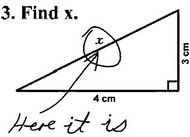A first-hand report.
Forwarded from the Yale University listserv
| September 9, 2005 by Hemant H. Vankawala, MD: Greetings from the New Orleans airport: For those of you who don't know me, I am a member of the Texas-4-disaster medical assistance team (DMAT). We are a part of FEMA. I joined a couple of months ago, and my team was activated 11 days ago. For the past 8 days I have been living and working at the New Orleans airport delivering medical care to the Katrina hurricane survivors. Our team was the first to arrive at the airport and set up our field hospital. We watched our population grow from 30 DMAT personnel taking care of 6 patients and 2 security guards swell to around 10,000 people in the first 15 hours. These people had had no food or water or security for several days and were tired, frustrated, sick, wet, and heart-broken. People were brought in by trucks, busses, ambulances, school buses, cars, and helicopters. We received patients from hospitals as well as schools and homes. The entire remaining population of New Orleans funneled through our doors. Our little civilian team, along with a couple of other DMAT teams, set up and ran THE biggest evacuation this country has ever seen. The numbers are absolutely staggering. In hindsight it seems silly that a bunch of civilian yahoos came in and took over the airport and had it up and running, exceeding its normal operating load of passengers, with an untrained skeleton crew and partial generator power. But we did what we had to do and I think we did it well. Our team has been working the flight line, off-loading helicopters. Overnight we turned New Orleans airport into the busiest helicopter base in the entire world. At any given time there were at least 8-10 helicopters off-loading on the tarmac, each filled with 10-40 survivors at a time, with 10 circling to land. It was a non-stop never-ending 24 hour a day operation. The CNN footage does not even begin to do it justice. The roar of rotor blades, the smell of jet fuel, and the thousands of eyes looking at us for answers, for hope. Our busiest day we off loaded just under 15,000 patients by air and ground. At that time we had about 30 medical providers and 100 ancillary staff. All we could do was provide the barest amount of comfort care. We watched many, many people die. We practiced medical triage at its most basic, black tagging the sickest people and culling them from the masses so that they could die in a separate area. I cannot even begin to describe the transformation in my own sensibilities from my normal practice of medicine to the reality of the operation here. We were SO short on wheelchairs and litters that we had to stack patients in airport chairs and lay them on the floor. They remained there for hours -- too tired to be frightened, too weak to care about their urine- and stool- soaked clothing, too desperate to even ask what was going to happen next. Imagine trading your single patient-use latex gloves for a pair of thick leather work gloves that never came off your hands, and you can begin to imagine what it was like. We did not practice medicine -- there was nothing sexy or glamorous or routine about what we did. We moved hundreds of patients an hour, thousands of patients a day -- off the flight line and into the terminal and baggage area. Patients were loaded onto baggage carts and trucked to the baggage area like, well, baggage. There was no time to talk, no time to cry, no time to think, because they kept on coming. Our only salvation was when the bureaucratic Washington machine was able to ramp up and streamline the exodus of patients out of here. Imagine people so desperate, so sick, so like the 5-10 "true" emergencies you may get on a regular hospital shift, coming through the door, non-stop. That is all that you take care of. Now imagine having no beds, no O2 -- no nothing, except some nitro, aspirin and all the good intentions in the world. We did everything from delivering babies to simply providing morphine and a blanket for septic and critical patients and allowing them to die. During the days that it took for that exodus to occur, we filled the airport to its bursting point. There was a time when there were 16,000 angry, tired, frustrated people here. There were stabbings, rapes, and people on the verge of mobbing. The flight line was lined with 2 parallel rows of Dauphins, Sea Kings, Hueys, Chinooks and every other kind of helicopter imaginable. It was a dangerous place. But we were much more frightened whenever we entered the sea of displaced humanity that had filled every nook and cranny of the airport. It is only now, when the thousands of survivors had been evacuated, the floors soaked in bleach, the putrid air allowed to exchange for fresh, and the number of soldiers allowed to outnumber the patients, that we feel safe. I have meet so many people while down here. People who were at ground zero at 9-11, people who have done tsunami relief and tours in Iraq, and every one of them has said that this is the worst thing they have ever seen. It’s unanimous, and these are some battle worn veterans of every kind of disaster you can imagine. It’s a war zone in New Orleans. It is covered in raw sewage with no infrastructure. Every engineer I have spoken with believes that most of the city will have to be plowed into fields and that rebuilding what is left will take decades. It will NEVER be the same. Never. Ever. For those of you who want to help, the next step is to help those who arrive in your local area. The only real medical care these survivors will receive is once they land in a safe, clean area far from here. For the 50,000 people we ran through this airport over the last couple of days, if they were able to survive and make it somewhere else, their care will begin only when providers in Dallas and Houston and Chicago and Baton Rouge (etc.) volunteer at the shelters and provide care. And yes there are many, many more on their way. Many of the sickest simply died while here at the airport. Many have been stressed beyond measure and will die shortly, even though they were evacuated. If you are not medical, then go to the shelters, hold hands, and give hugs and prayers. If nothing else it will remind you how much you have and how grateful we all should be. These people have nothing. Not only have they lost their material possessions and homes, many have lost their children, spouses, parents, arms, legs, vision, everything that is important. Talk to these survivors, hear their stories and what they have been through, look into their eyes. You will never think of America the same way; you will never look at your family the same way; you will never look at your home the same way, and I promise it will forever change the way you practice medicine. Many, many stories to tell when I get back, looking forward to seeing you all again. We are VERY safe down here (now thank God!) and we shall be home soon. Hemant H. Vankawala, M.D. |
Technorati Tags: Katrina, Hurricane, FEMA



 A few of my daughter
Melina's great posts:
A few of my daughter
Melina's great posts:








1 Comments:
simply astounding and beyond what I allow my self to take in as I wait for the novel to come out... Furthermore it is simply new information to me, perhaps because I do not take a daily paper. Thanks for posting.
I have enjoyed many of your postings; the cartoonist's graduation speech, unpacking your son at college and your musical sensibility!
I arrived via Ever So Humble
Post a Comment
<< Home